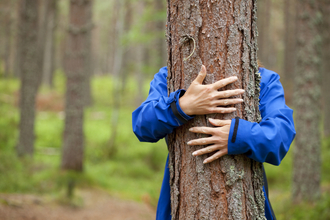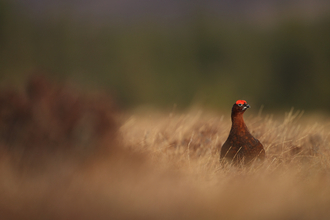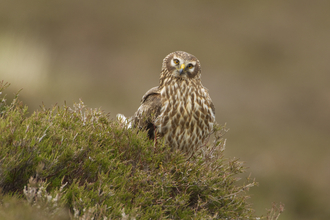Heather
The iconic British moorlands of Wuthering Heights and Hounds of the Baskervilles fame are depicted as bleak; windswept and foreboding. But as the heather bursts into flower at the end of the summer, the moors become a blazing carpet of purple for as far as the eye can see. There is surely no better time of year to head for the hills and experience this stunning spectacle. A large proportion of the world’s moors and upland heaths are in the UK, making our moorlands internationally important, and giving us a special responsibility to conserve and protect these habitats.
The moors are transformed at the end of the summer; bursting into life with the buzzing of bees, the chuckling of red grouse, and the curlew's cries
Find heather near you
The Scottish Wildlife Trust's largest reserve, Ben Mor Coigach is an excellent spot. Dominating the landscape north of Ullapool, it covers over 5,000 hectares, and combines a mixture of high peaks and magnificent coastline with crofted and wild land. Use the list below to find some of our recommended spots near you:
North
- Cumbria, Eycott Hill and Butterburn Flow
- Durham, Hedleyhope Fell
- Northumberland, Falstone Moss
- Northumberland, Harbottle Crags and Whitelee Moor
- Sheffield, Blackamoor
- Yorkshire, Fen Bog
South
- Cornwall, Priddacombe Downs
- Devon, Rackenford and Knowstone Moor
- Devon, Bellever Moor and Meadow
- Devon, Dart Valley
- Essex, Tiptree Heath
Midlands
- Derbyshire, Ladybower Wood and Brockholes Wood
- Shropshire, Nipstone Rock
- Staffordshire, Black Brook, and The Roaches
- Warwickshire, Priory Fields
Wales
- Denbighshire, Gors Maen Llwyd
- Montgomeryshire, Glaslyn Nature Reserve
- North Wales, Gors Maen Llwyd
- North Wales, Cors Goch
- North Wales, Mariandyrys
- North Wales, Porth Diana
- North Wales, Gwaith Powdwr
- Powys, Cnwch Bank
- Powys, Mynydd Ffoesidoes
Scotland
- Ayrshire, Dalmellington Moss
- Highland, Rahoy Hills
- Highland, Isle of Eigg
- Midlothian, Red Moss of Balerno
Islands
- Isles of Scilly, Chapel Down
- Isles of Scilly, Peninnis Head
- Isles of Scilly, Plains & Great Bay
- Isles of Scilly, Samson
- Isles of Scilly, Shipman Head Down
- Isles of Scilly, Wingltang Down
How to do it
Moorland is generally found in the uplands, and as most is open access land you are free to wander, but it’s best to stick to well used paths. The weather up here can change quickly and it’s easy to get lost in such vast landscapes. Keep any dogs on a lead - while it can be tempting to let them run free, the moors are home to ground nesting birds and grazing animals, neither of which enjoy the attentions of an over-excited pooch.
If you can't get to these places
It’s not only the uplands that are awash with purple in the autumn. The lowland heaths of southern England and south Wales have the heather showing off at is best alongside the golden yellow of gorse.
For a different kind of purple, you can see thousands of autumn crocus or "meadow saffron" in damp meadows and woodland rides/clearings. Herefordshire's Leeping Stocks and Worcestershire and Montgomeryshire's Llanmerewig Glebe have beautiful havens for this poisonous plant. Not a true crocus, the flowers resemble pink crocuses, but are in fact colchicums. The leaves appear in the spring and can be confused with wild garlic - a potentially lethal mistake!
More wildlife experiences
From seeing colourful wildflowers to spotting magnificent birds of prey, we can help you get closer to wildlife across the UK.








